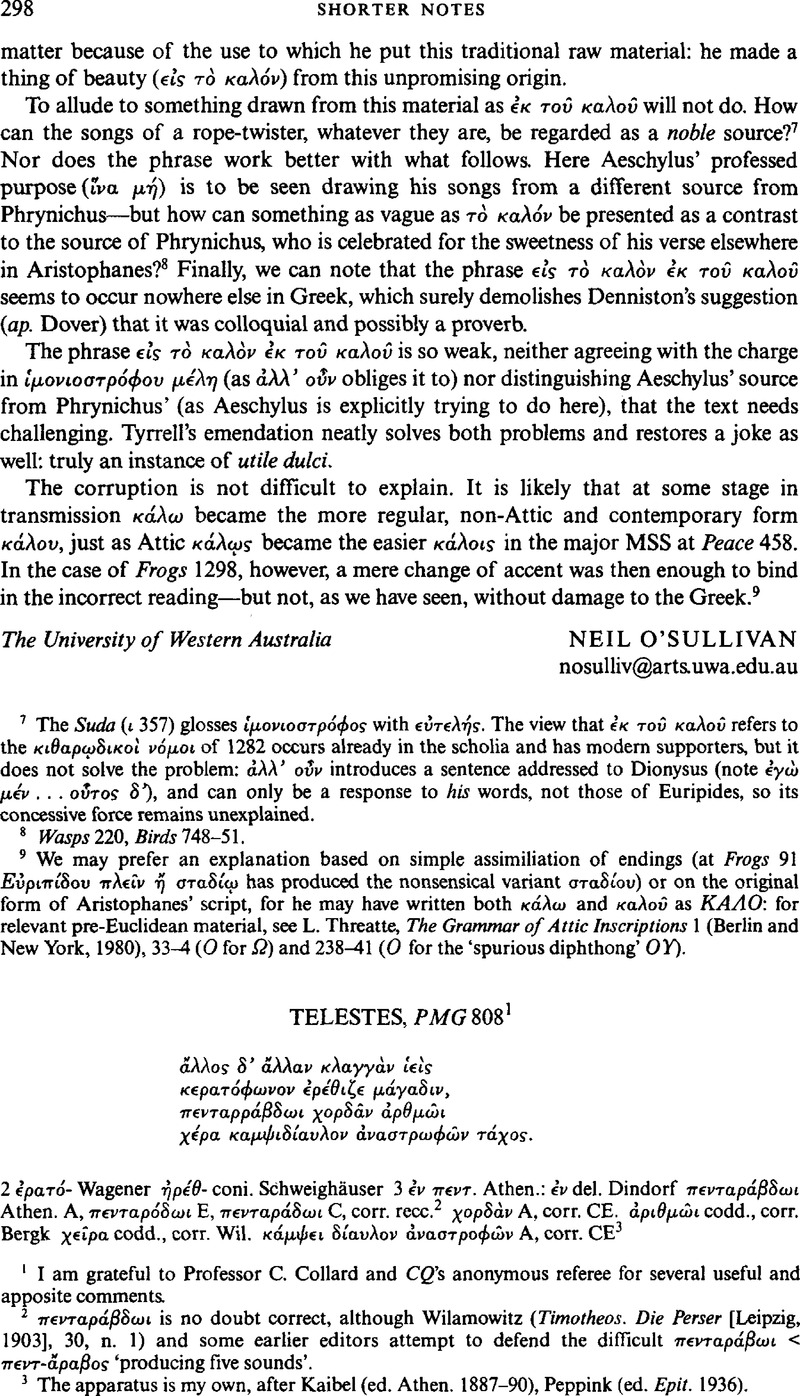No CrossRef data available.
Published online by Cambridge University Press: 11 February 2009

1 I am grateful to Professor C. Collard and CQ's anonymous referee for several useful and apposite comments.
2 nivrapafihwi is no doubt correct, although Wilamowitz (Timotheos. Die Perser [Leipzig, 1903], 30, n. 1) and some earlier editors attempt to defend the difficult πενταρᾰβωι <πεντ-ἄραβος ‘producing five sounds’.
3 The apparatus is my own, after Kaibel (ed. Athen. 1887–90), Peppink (ed. Epit. 1936).
4 see West, M. L., Greek Metre (Oxford, 1982), 121.Google Scholar
5 These would be disturbed by Schweighäuser's ༠ρθιζε; cf. further Von Wilamowitzmoellendorft, U., Griechische Verskunst (Berlin, 1921), 334Google Scholar and n. 3. See further the remarks below on κερτόφωνον.
6 Barker, A., CQ4S (1998), 75–81.Google Scholar
7 Barker (n. 6), 77. Barker also compares πντοζος ‘five-branched', used substantivally of the hand at Hes. Op. 542, but that appears to be an old IE formation, and therefore not a valid parallel (see West's note on the line and Edwards, G. P., The Language ofHesiod in its Traditional Context [Oxford, 1971], 111–13).Google Scholar
8 For recent discussions, see Barker, A. in Gentili, B. and Pretagostini, R. (edd.) La musica in Grecia (Rome and Bari, 1988), 96–107Google Scholar, and West, M. L., Ancient Greek Music (Oxford, 1992), 72–3.Google Scholar
9 M. L.West(n. 8), 61.
10 See in general Bers, V., Enallage and Greek Style (Leiden, 1974)Google Scholar, Breitenbach, W., Untersuchungen zur Sprache der euripideischen Lyrik (Stuttgart, 1934), 182ff.Google Scholar
11 In Gevaert, F. A., La Musique de l’ Antiquitè (Ghent, 1875–81), 2.633.Google Scholar